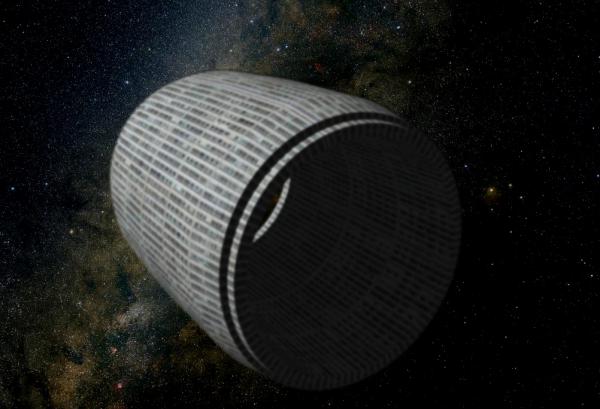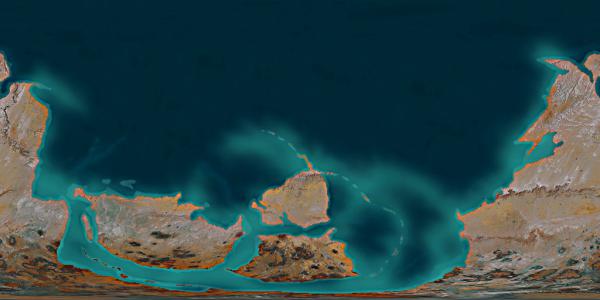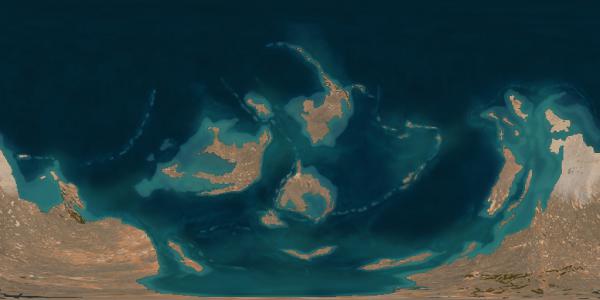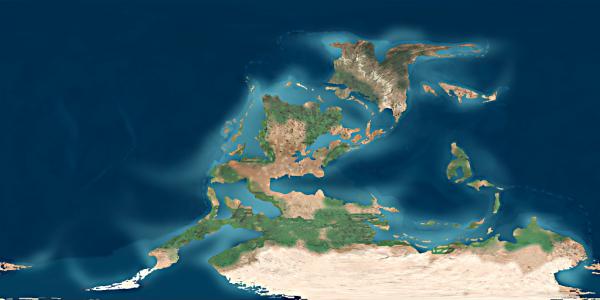BY LETTER
Magal Worldrings, the
Galactography > Regions of Space > Middle Regions/Hinter-regions
Galactography > Systems and Worlds > Systems & Worlds M - N
Galactography > Sephirotic Empires > Terragen Federation
Galactography > Systems and Worlds > Systems & Worlds M - N
Galactography > Sephirotic Empires > Terragen Federation
The Ring of Ages, a collection of Worldrings that depict many different eras in the history of Old Earth | |
 Image from Steve Bowers | |
| Worldrings are sometimes called 'Worlds turned inside out'. The Magal rings each have an inner ring that houses most of the population in hi-tech comfort. The outer ring is artificially illuminated, and replicates a primitive or prehistoric environment from Earth's distant past, or a fantastic or speculative environment. | |
Star: HIP 21091
Type: G0
Luminosity: 1 x Sol
Distance from Sol: 193 ly
Constellation: Taurus
Allegiance: Terragen Federation
Magal was colonised in 2522 AT by the Taurus Nexus, but became part of the Terragen Federation following the First Consolidation War. In 6010 House Magal started construction of the first World Ring in this system, using the three dense asteroid belts for construction material. To date, one hundred and twelve rings have been constructed, although not all are fully complete.
 Image from Steve Bowers | |
| Magal Ediacaran Ring, based on Earth 560 million years ago | |
The Magal Worldrings orbit the system's star in a single dyson ring swarm that is collectively called "The Ring of Ages." The goal of the Ring of Ages is to recreate the surface features and life of Earth; not just as the Terrans remembered it but as it was throughout its history. To this end the Magals have devoted one World Ring to each of the eras, periods and epochs of Earth's geologic time scale. Also within the Ring of Ages are clusters of rings for the "Ages of Man" which cover the prehistorical periods, the historical periods and the mythological periods (such as the antediluvian period, the Atlantian age and the heroic age). There is even a cluster of Dixolutionist rings that explore alternate and future evolutionary histories.
 Image from Steve Bowers | |
| Magal Cambrian Ring | |
The Magal World Rings are constructed like a belted radial tire, with additional strands of magmatter in the ring floor, because it was also important to them to get the map proportions right. Their World Rings all have a radius of just 6,400 km (6,378.16 km inside at sea level) but are 12,728 km wide and use cylindrical equal-area projection to lay out the surface features.
 Image from Steve Bowers | |
| Magal Ordovician Ring | |
Because the Magal World Rings are not true rings but actually short cylinders they need additional stabilization to prevent tumbling. Some of this comes from fine tuning the distribution of mass, concentrating it towards the "equatorial regions" of the World Rings while lightweighting the rings near their rim-walls. This has been achieved by foaming the materials of the lithotorus, and shallowing the hydrotorus, near the rim-walls. Even the rim-walls themselves are, for the most part, just sheets of carbon nanotube cables hung under tension from the beads like curtains.
 Image from Steve Bowers | |
| Magal Carboniferous Ring | |
Also, active stabilization has been gained by enlarging the rings' hubs into smaller counter-rotating cylinders: Magnetically linked to their larger cylinders these inner cylinders hold all of the out-of-period populations, the hab minds, power generation, etc. The underside of an inner cylinder also provides the lighting effects for their outer cylinder. Covered with an optical phased array the inner cylinder can project not just sunlight but also moving images of Luna, the planets, the stars and anything else that might be needed. And by accelerating/decelerating one cylinder against the other "tides" can be generated in synch with the movements of the "sun" and "moon."
 Image from Steve Bowers | |
| Cretaceous Ring | |
The First House Magal Schism
During the Age of Crisis a split developed in House Magal over the provolution of various species on several of these worldrings. Each prehistoric ring was populated by lazurogened species representing the biota of that period; except for the most recent rings, these recreated species were the result of very incomplete data and informed speculation. Elsewhere in the Terragen Sphere several of these speculative species had already been raised to sentience by various transapient entities, and a significant faction in House Magal wished to extend that practice to the species in the Worldrings.A number of provolved species came to live in the inner hi-tech worldrings of these worlds, notably the provolved Anomalocaris that had been developed during the late Federation era, who were now a well-established clade in the Terragen Federation. These sophonts were keen on inhabiting the oceans of Magal Cambrian ring and communing with the non-sentient creatures there. However the dominant faction on the prehistoric rings at that time was an Authenticist one, the Keepers of Antiquity, who would not allow this.
An alliance of various provolved ancient species came together to campaign for the right of access to these environments, which were off-limits for habitation by sophonts of any kind. Gradually escalating from bitter argument to terrorism and actual war, both within the ring structures and among the asteroid belts and construction sites. The giant anomalocaris bioships were no match for the system control ships of House Magal, but the provolves gradually garnered sympathy and support. By 7990 the provolves won the right to inhabit these ancient environments, but soon instigated limitations on this migration themselves.
The Second Schism
In the early 84th century certain raptorsaur provolves acquired a taste for hunting on the Cretaceous Ring using adapted weapons. Since this ring was their home, most members of House Magal were prepared to permit them to follow this hobby within reason, but soon the raptors were using larger and more deadly weapons, often supplied by Trillicon Arms. Next they started to hunt in the reconstructed environments of the nearby rings, particularly the Jurassic and Triassic worlds, eventually finding their way onto nearly every other ring, causing mayhem among the legendary and historical worlds.Both Authenticists and many enthusiasts for provolution found this slaughter offensive, although some were prepared to accommodate the raptor's hobby as a natural consequence of their predatory nature. At least they attempted to eat as many as they could of the creatures which they killed. But the raptors rejected any attempts to regulate their hunting trips, and began to use even more provocative technology to kill species. They managed to eliminate the prolific Lystrosaurus from Permian ring using such techniques. Luckily the small population of provolved Lystros who lived in the inner ring were able to reintroduce the species from stored DNA data.
On the Midgard ring certain legendary heroes were glad of the arrival of these well-armed reptiles, considering them to be dragons to be slain; the raptors found these ferocious humans to be amusing, and formed a close relationship with them. But elsewhere the raptors were not received well, and attempts to discourage or exclude them soon developed into conflicts. After more than a hundred years the House Magal transapients, who were largely above such worldly concerns, stepped in and forged an agreement, which has largely reduced this schism to a matter of lifestyle choice in the centuries since that time.
The alliance between the raptors and the Midgard heroes has persisted to the Current Era, and hero/raptor pairs are often found wandering through the Terragen Sphere, acting as mercenaries or specialised hunters.
Related Articles
- Dixolutionists
- Geological History of Earth
- Geological Time, Geological Time Scale - Text by M. Alan Kazlev
The history of a Terrestrial Class planet in terms of its formation and major stages of development. It is usually measured in many millions of years. The divisions used (from the largest (longest time) to the smallest (shortest time period) are: eon, era, period, epoch, and age. - Magmatter
- Worldrings
Appears in Topics
Development Notes
Text by AI Vin and Steve Bowers
Initially published on 17 December 2014.
Initially published on 17 December 2014.






